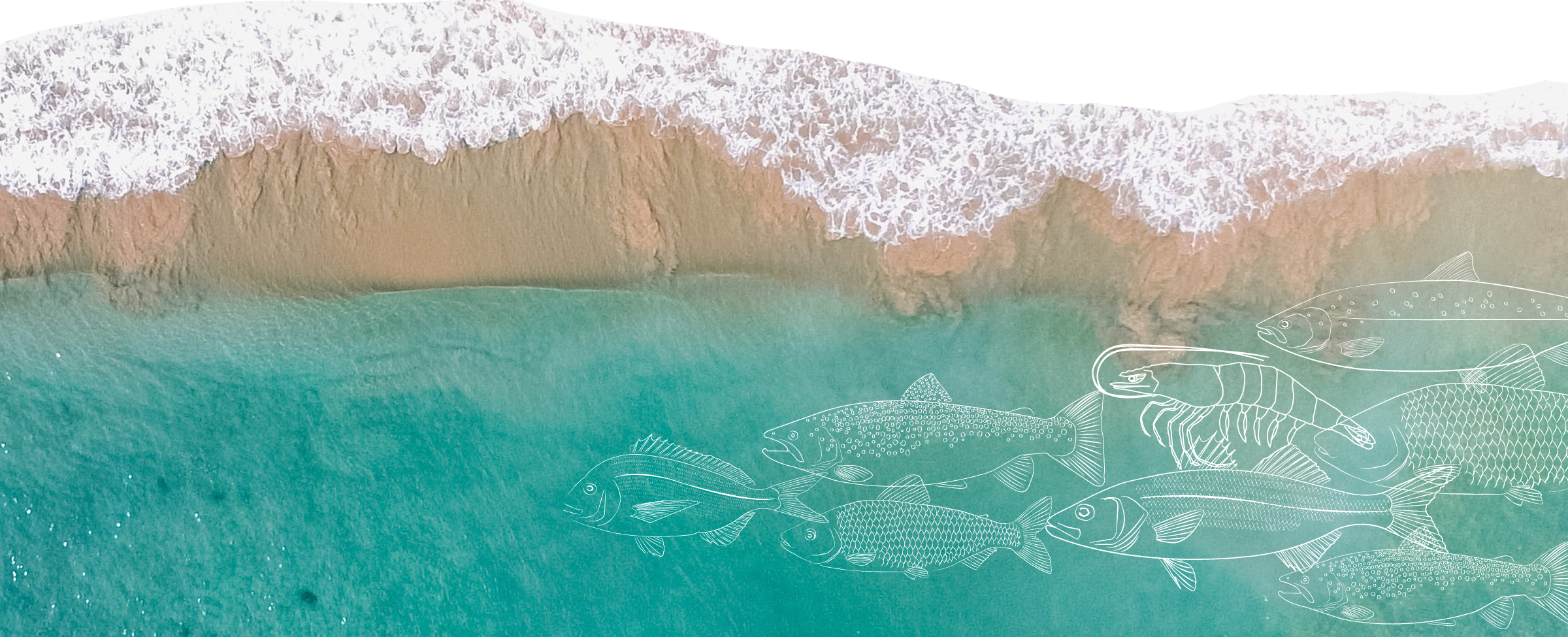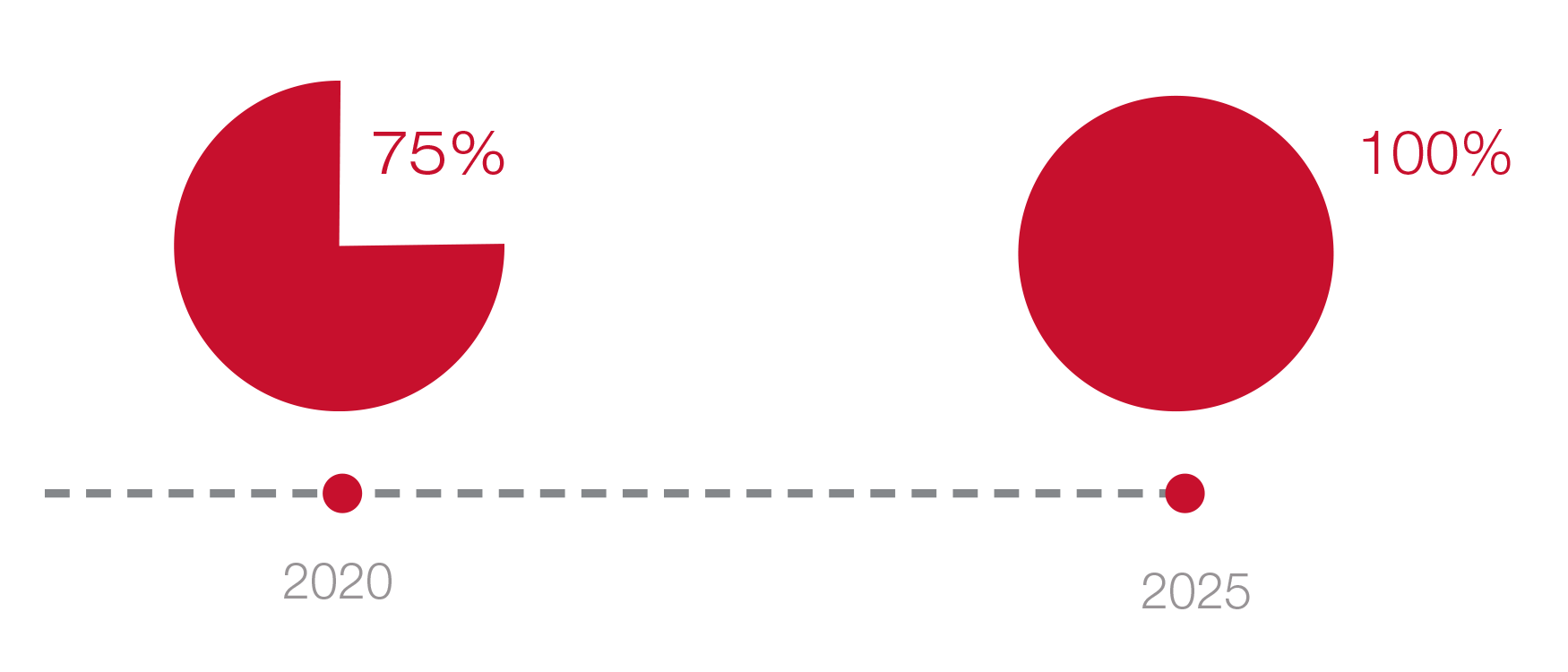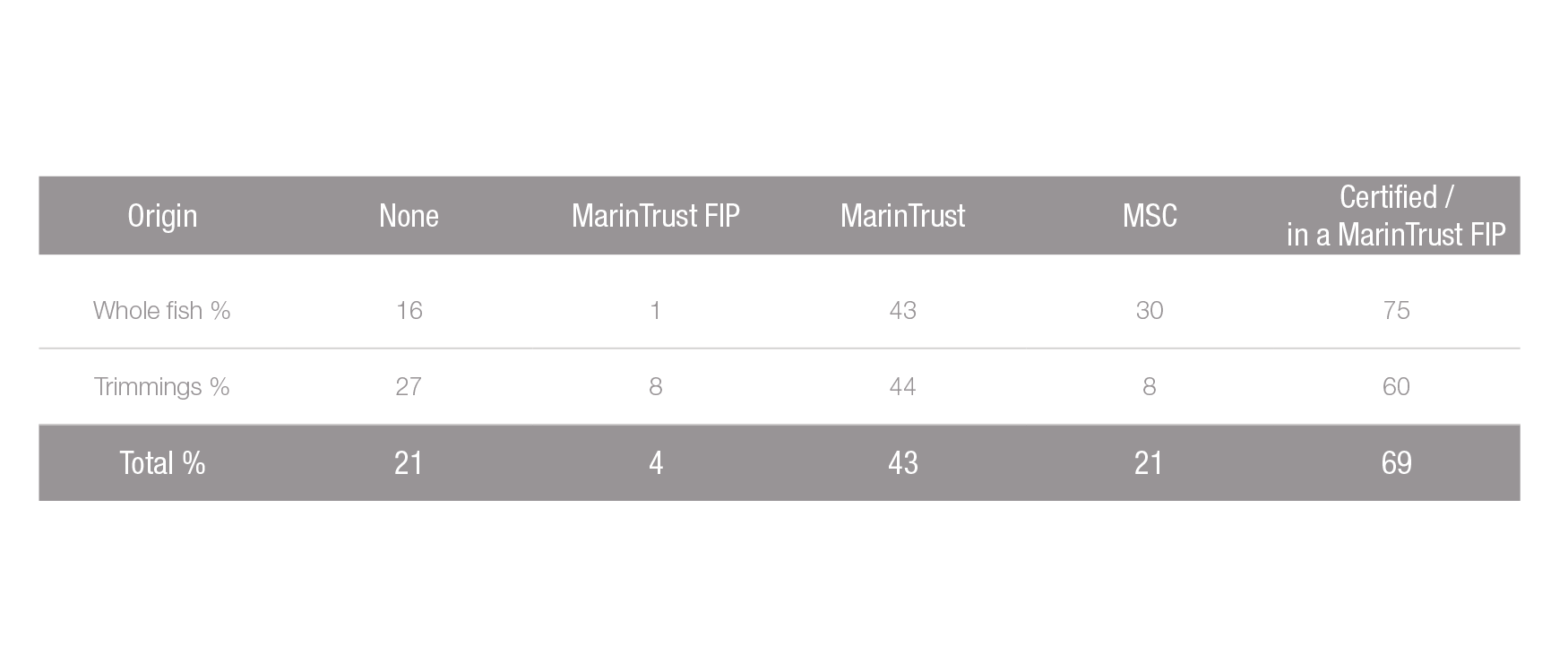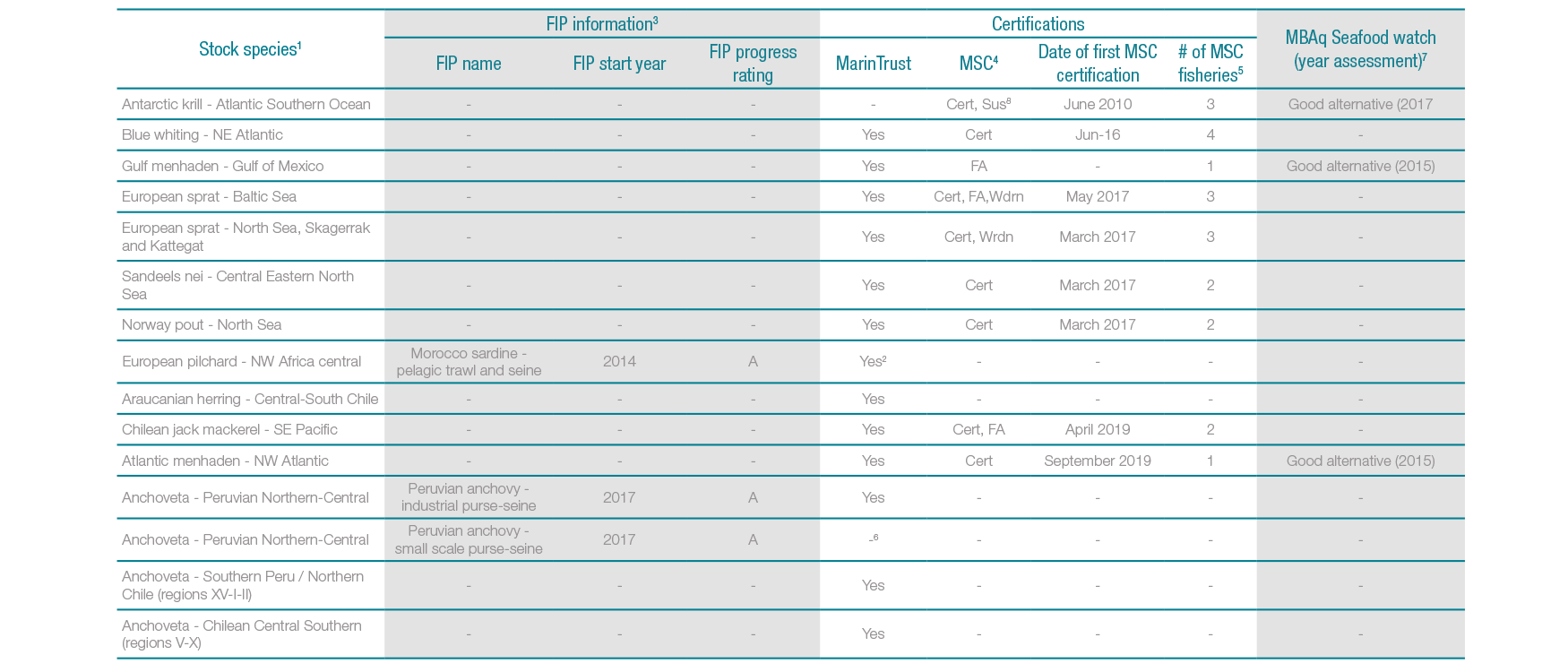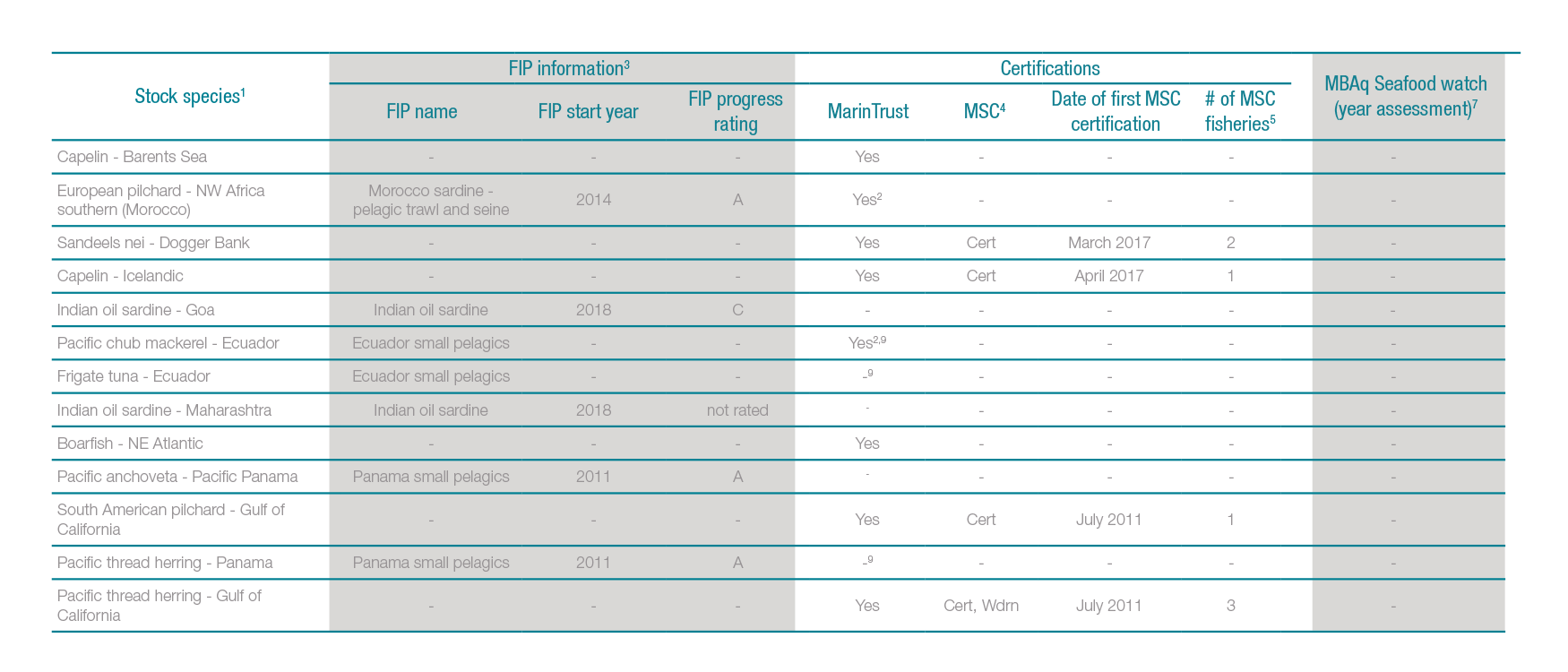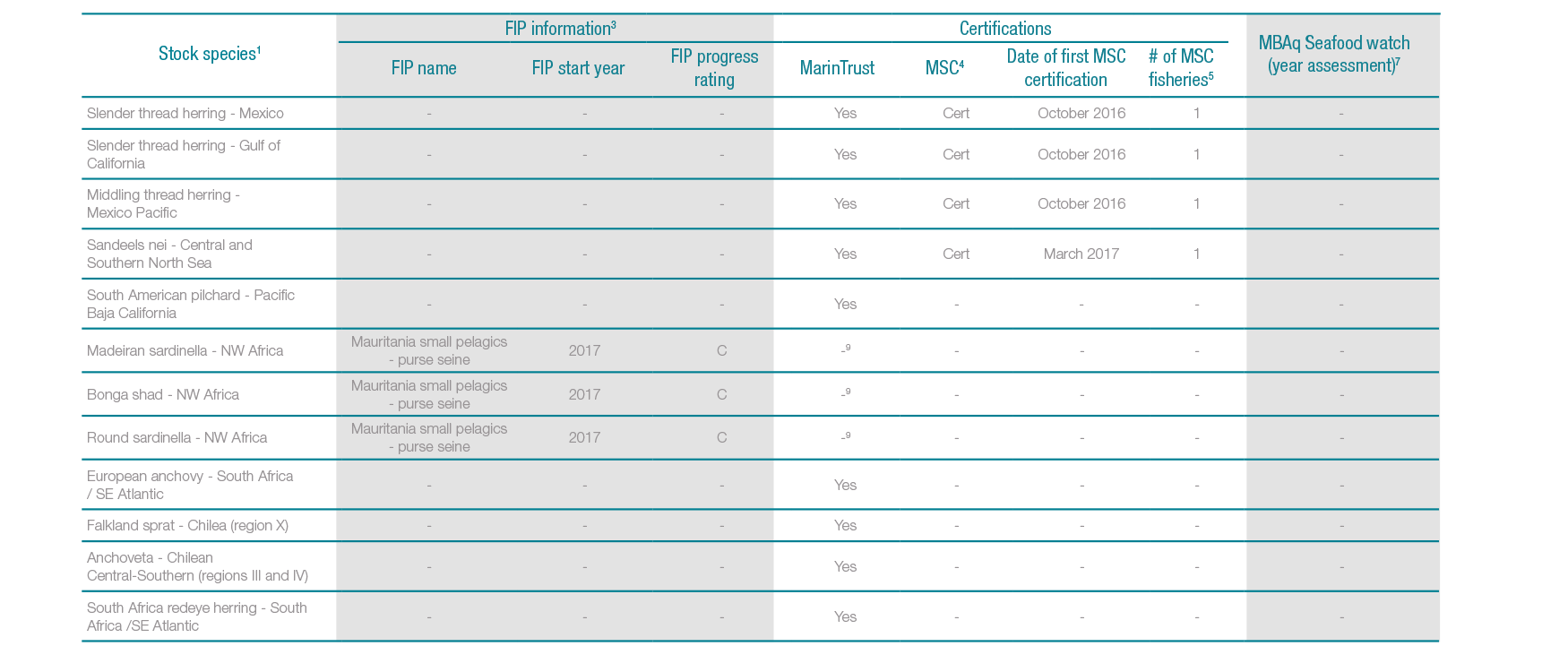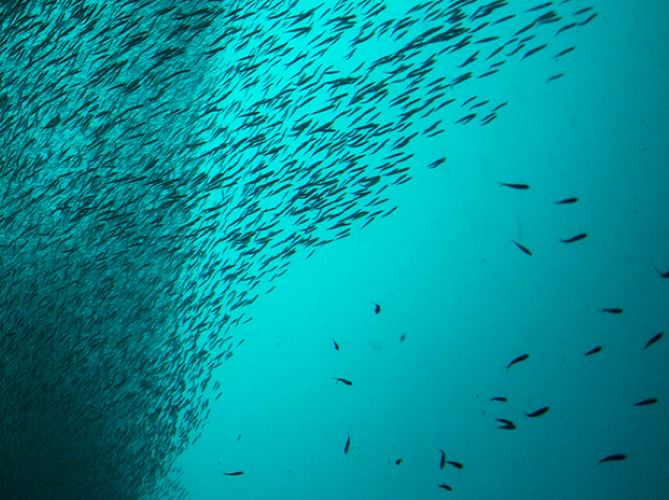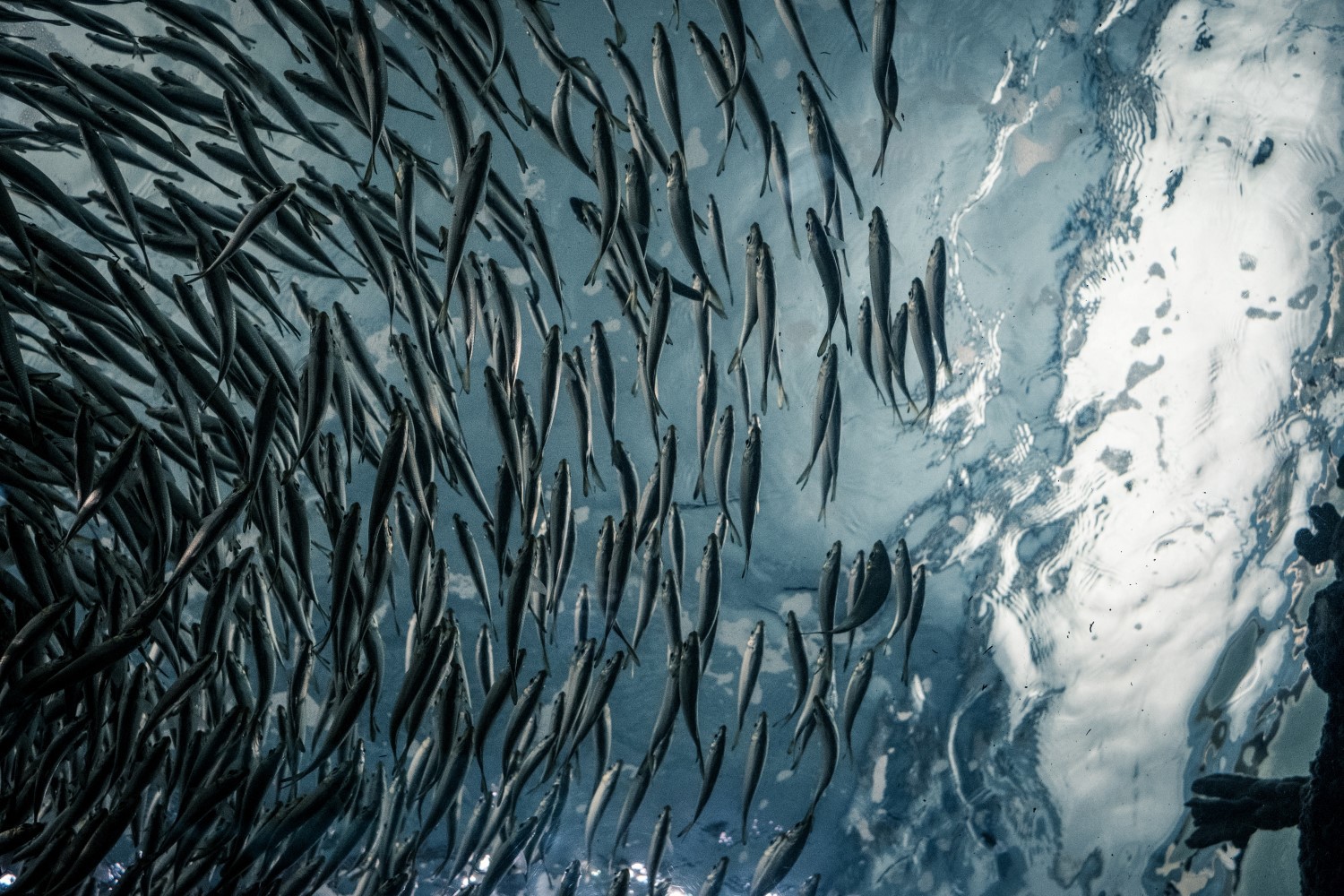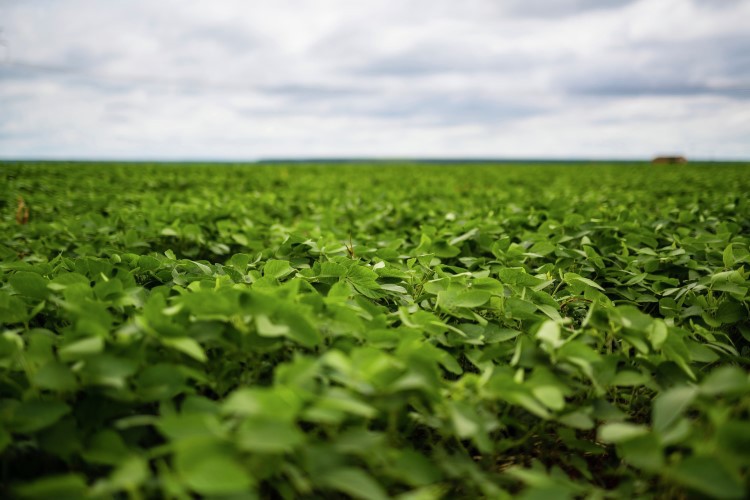
The origin of our marine ingredients
Wild fish harvested from the ocean and processed into fishmeal and fish oil are typical ingredients of many aquaculture feeds. Typically, small pelagic fisheries are used by the fishmeal and fish oil industry, indeed most of the fishmeal and fish oil that Skretting sources is from such fisheries, but in some regions, these resources are also important for direct human consumption. Skretting strives to ensure that all of its marine-based feed ingredients come from sustainable sources. This requirement includes the aim to align industry incentives that support processes that lead to improved fisheries management.
Our ambition is that all fishmeal and fish oil we use originates from fisheries that are managed according to the FAO Code of Conduct for Responsible Fisheries. This means that our suppliers must be able to demonstrate that the fishmeal and fish oil is certified according to the MarinTrust standard (which includes Marine Stewardship Council certification), or be participating in an improvement project with the aim of becoming MarinTrust certified.
In 2020, 75% of fishmeal and fish oil originating from whole fish that was purchased by Skretting came from fisheries certified according to the MarinTrust or MSC programmes, or from fisheries that were part of a MarinTrust fishery improvement programme (FIP). Our sustainability roadmap has the goal that by 2025 100% of fishmeal and fish oil purchased by Skretting will be MarinTrust certified or participating in a MarinTrust improvers programme.
Skretting strives to ensure that all of its marine-based feed ingredients come from sustainable sources.
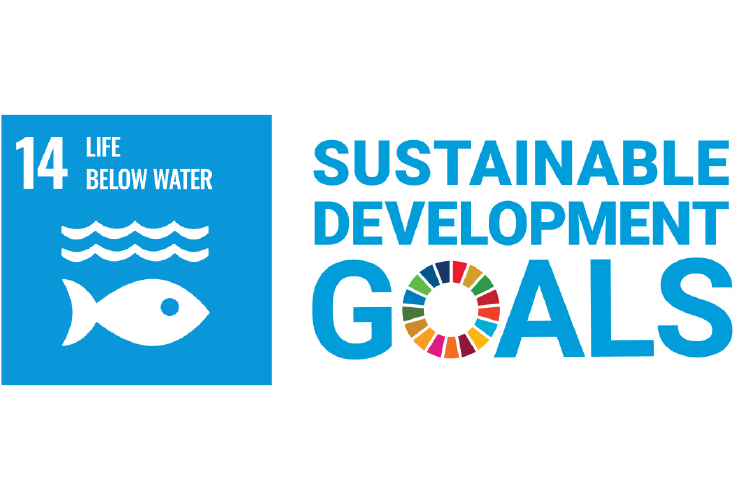
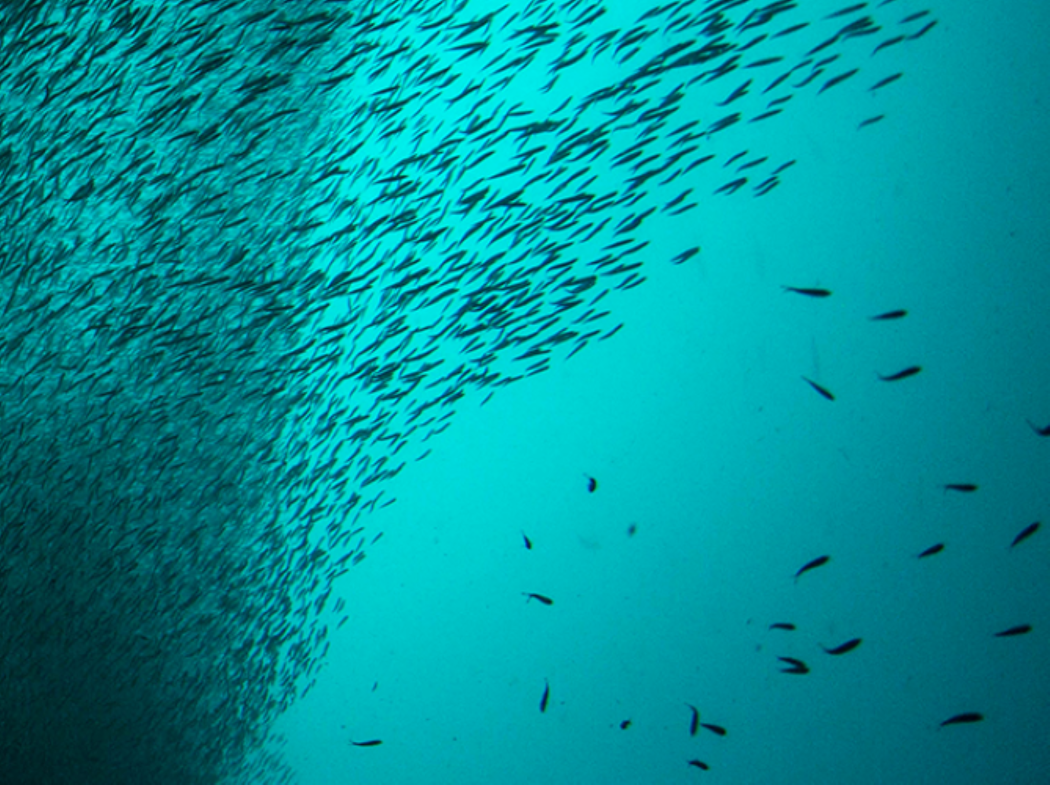
Fisheries of origin
Aquaculture feeds often contain fishmeal and fish oil that have been processed from wild-caught fish. These fisheries are sometimes referred to as ‘reduction fisheries’, where all of the catch is delivered to a factory for processing.
The small pelagic fish species caught for this purpose are commonly known as ‘forage fish’, and are often small, short-lived species like sardine, anchovy and herring that occupy a low trophic level in the marine ecosystem. Due to their specific population biology and dynamics, these species are frequently resilient to fishing pressure if catch is well managed, but overfishing is always a possibility without effective controls.
In some regions, these species are important for direct human consumption. Through our sustainability programme, we strive to ensure that marine feed ingredients come from sustainable sources in the short- and long-term. We actively work to align industry incentives to support processes that will lead to improved fisheries management.
In addition to the use of wild-caught fish, we are increasing the use of by-products from the processing of fish for human consumption. These offcuts are valuable as a raw material from which fishmeal and fish oil is often produced. It is estimated that approximately one third of fishmeal is made from these by-products. This also makes it possible fro us to use feed ingredients that are not in direct competition with human nutrition, and which support the development of a circular economy.
Fish species that make up the origin of fishmeal and fish oil produced from whole fish purchased by Skretting in 2020
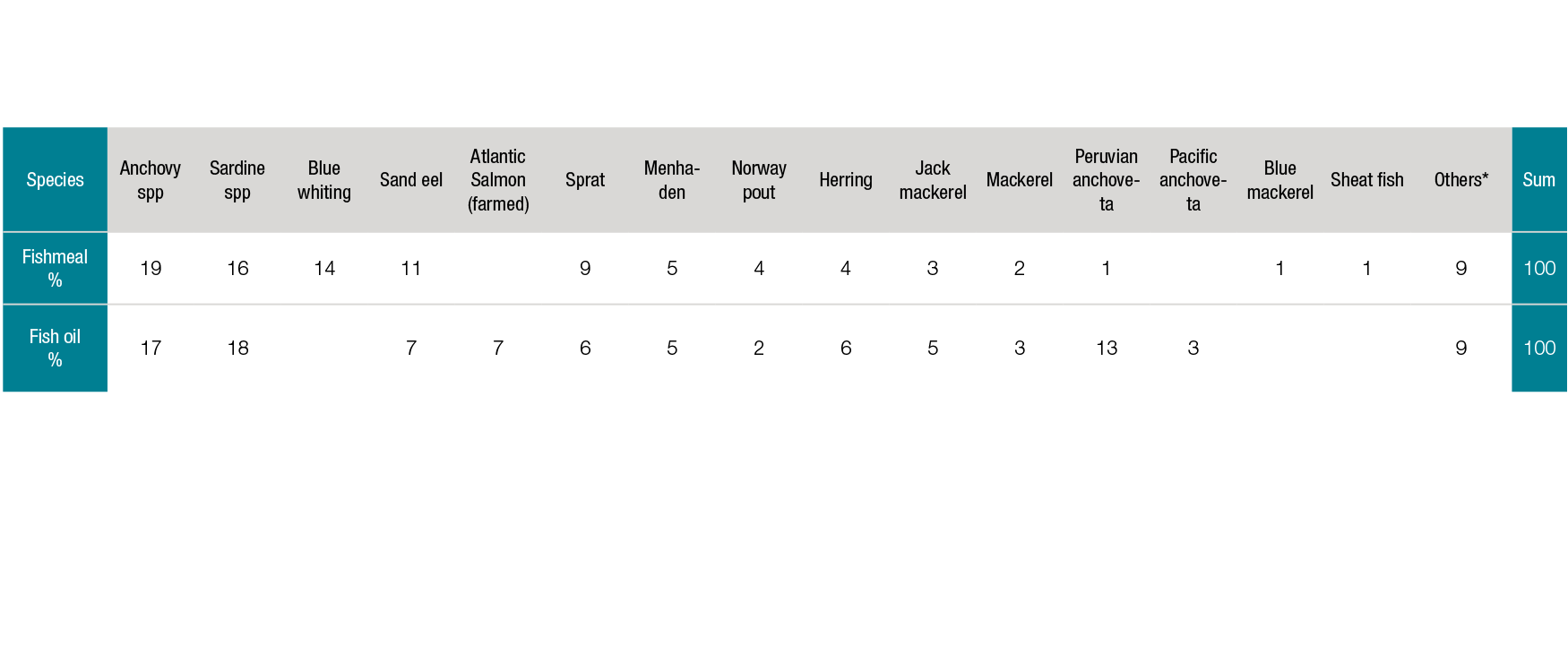
We actively work to align industry incentives to support processes that will lead to improved fisheries management.
In 2020, 40% of Skretting’s fishmeal and fish oil came from trimmings and by-products, compared with 27% in 2019. Most of these by-products originated from wild-capture fish processing for human consumption, but we have seen an increased use in by-products from processing of farmed species like salmon, tilapia and shrimp.
By-products are collected from processing activities conducted by seafood companies, retailers, aquaculture operations, and onboard fishing vessels and more. Skretting's ambition is that all the fishmeal and fish oil derived from by-products can be traced back to its fishery origins and species of fish. These species must not be listed as endangered on the IUCN Red List of Threatened Species.
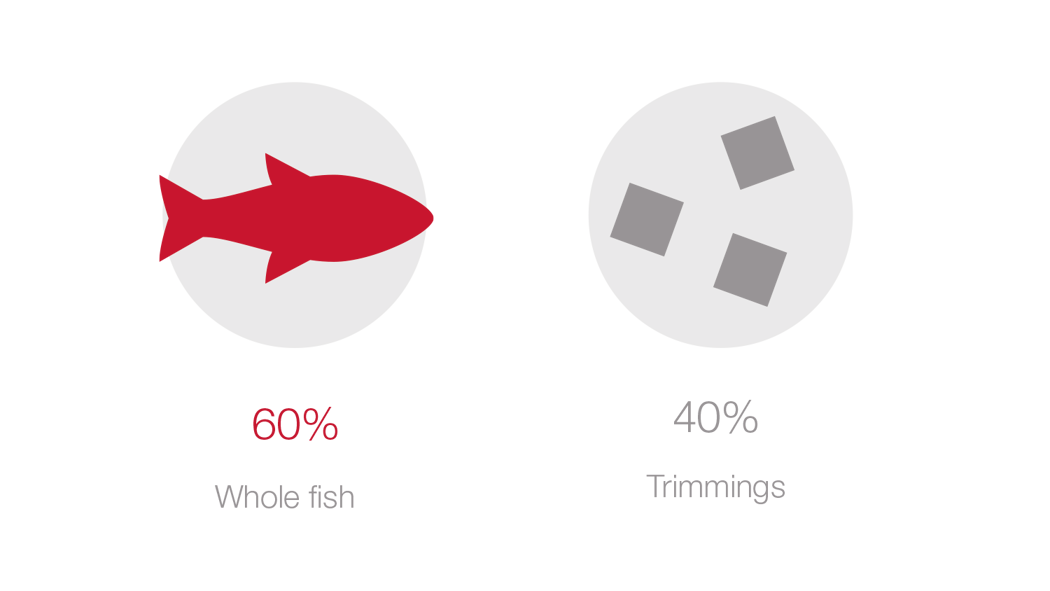
By-products
By-products are collected from processing activities conducted by seafood companies, retailers, aquaculture operations, and onboard fishing vessels and more. Our ambition is that all the fishmeal and fish oil derived from trimmings can be traced back to its fishery origins and species of fish. These species must not be listed as endangered on the IUCN Red List of Threatened Species.
Fish species that make up the origin of fishmeal and fish oil produced from trimmings purchased by Skretting in 2020
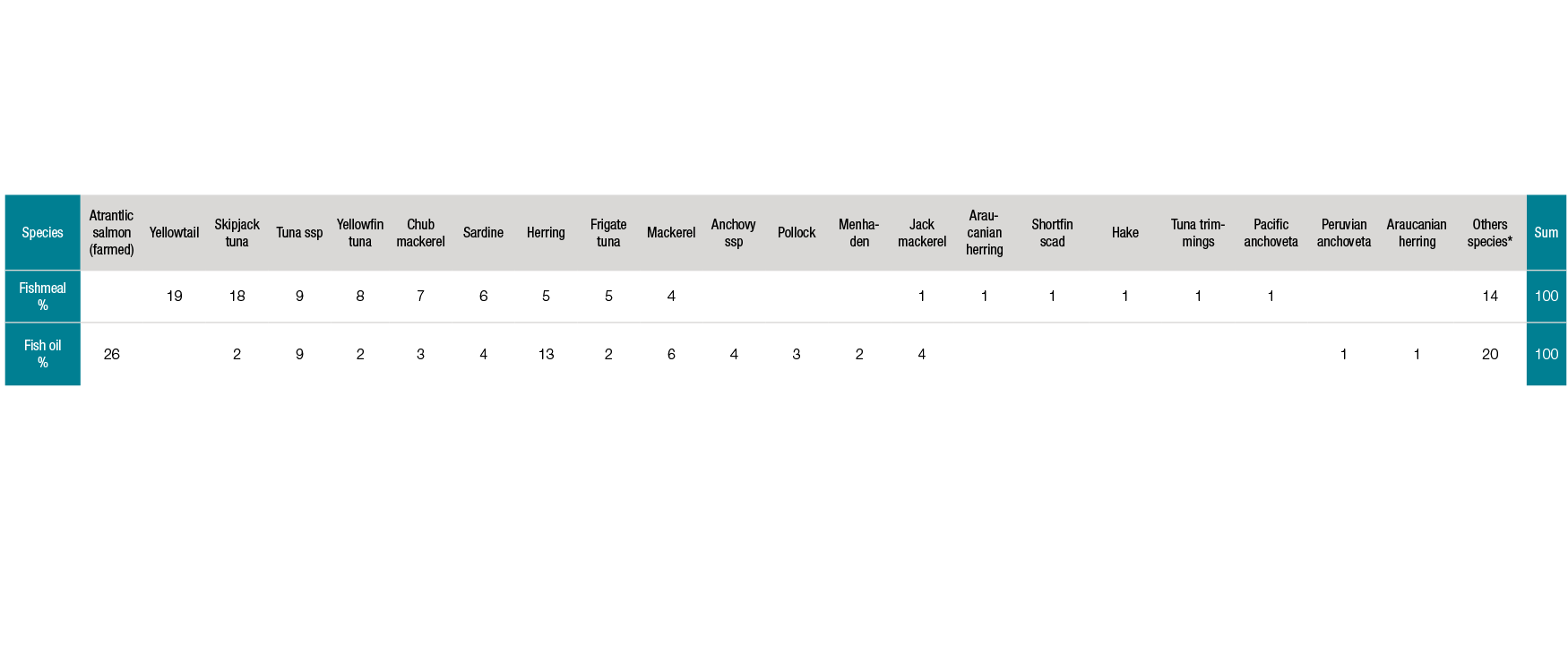
Main fisheries from which we purchase some of our fishmeal and fish oil
This table shows the main fisheries from which we purchase some of our fishmeal and fish oil. The exact proportion of fishmeal and fish oil purchased from these fisheries will vary by country, and can vary over time.
The information provided above is adopted from the report by the Sustainable Fisheries Partnership “Reduction Fisheries: SFP Fisheries Sustainability. Overview 2020.”
Notes: (1) This list covers fisheries from the reduction fisheries sector that are associated to one or more active fishery improvement projects (FIPs), or the certifications and rating programs considered. (2) Certified by MarinTrust as “by-product” fishery (for more information visit the MarinTrust website). (3) For more information on the currently active FIPs, please visit the Improvement Projects section in FishSource or the respective FIP public reports in Fishery Progress (FishChoice 2019). (4) MSC Status: Cert = Certified; FA = Full Assessment; Sus = Suspended; Wdrn = Withdrawn. (5) Refers to the number of fisheries that are in the MSC program and that overlap with the stock (source: SFP 2019; MSC 2019). (6) In Peru, the artisanal fishery for anchoveta must be used for human direct consumption only, thus it is outside of the scope of IFFO and the current overview. (7) Monterey Bay Aquarium Seafood Watch categories (MBAq 2019): Best Ch. = Best Choice; Good Alt. = Good alternative; Av = Avoid. Year assessment refers to the year the latest Seafood Watch assessment was conducted for the respective fishery. (8) The Rimfrost Antarctic krill MSC fishery has been suspended since June 2017. (9) There are improvement activities underway in this fishery, but it is still not evaluated as to meeting the requirements of a formal FIP. (9) The existing FIP was also recently accepted into the MarinTrust improvement program.
